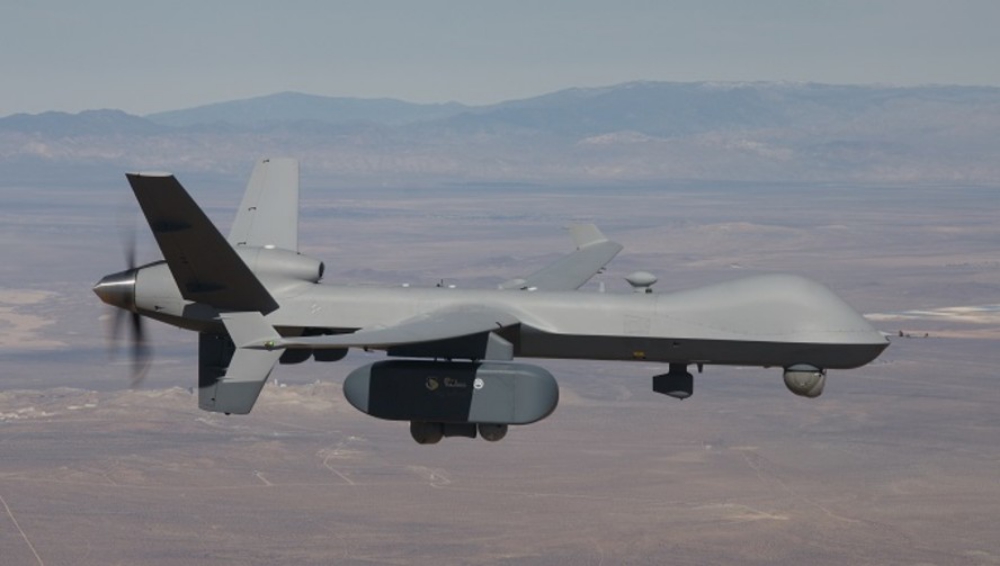In March 2018, the Air Force Life Cycle Management Center’s Sensors Program Office, working jointly with the AFLCMC Medium Altitude Unmanned Aerial Systems Program Office, sponsored three demonstration flights of an MQ-9 Reaper with AgilePod.
The flights were a first for AgilePod on an Air Force major weapon system, and were the result of collaboration between AFLCMC and the Air Force Research Lab.
“These flights mark the culmination of more than two years of cutting-edge technology development led by our colleagues within the Air Force Research Laboratory’s Materials and Manufacturing Directorate ManTech team, and Sensors Directorate Blue Guardian team,” said Lt. Col. Elwood Waddell, the advanced technologies branch chief within the Sensors Program Office.”
The AgilePod program will offer a family of non-proprietary, government-owned pods of several sizes that can accommodate various missions, quickly change payloads and fit on multiple platforms.
The program uses open adaptable architecture and standards-based design to ensure maximum flexibility without proprietary constraints.
“The AgilePod program began with a desire to bring agile manufacturing practices to the ISR [intelligence, surveillance and reconnaissance] enterprise, culminating in a wholly government-owned, open architecture ISR capability that was both payload and platform agnostic,” said Andrew Soine, a program manager with AFRL’s Materials and Manufacturing Directorate. “The program is really taking off, with proposed ISR and non-ISR applications that we couldn’t have foreseen only a few years ago. By owning the technical baseline, we’ve shown what can be done in relatively little time and cost when faced with emergent user needs.”
“Blue Guardian’s mission is to rapidly demonstrate emerging sensor technology,” added Capt. Juliana Nine, a program manager with AFRL’s Sensors Directorate. “These MQ-9 flights did exactly that. The open adaptable architecture based on Open Mission Systems and common electrical/mechanical interfaces developed by the Blue Guardian team enabled the rapid re-configurability of the sensors inside the AgilePod. This capability will help the warfighter adapt their sensor payloads as the mission dictates.”
U.S. Air Force ownership of the registered trademark for AgilePod is key to the program, giving the Air Force the authority to designate a given pod as an AgilePod. This cultivates a highly collaborative relationship with industry partners as the Air Force shares existing technical data under the protection of an Information Transfer Agreement.
The agreement enables the sharing of all government technical data on AgilePod while protecting government ownership and enabling industry innovation. For the demonstration, the Air Force partnered with Leidos (facilitated the open architecture sensor integration), the University of Dayton Research Institute (implemented the open software for sensor command and control), AdamWorks (built the AgilePod) and General Atomics (integrated the podded system onto the MQ-9 aircraft).
“We believe this program has the potential to both increase the velocity at which future sensor technology is made available to the warfighter, as well as to improve agility in employing various sensor modalities to fit any given scenario,” said Waddell.
The Sensors Program Office continues to collaborate with AFRL and industry partners on the design and upgrade of several AgilePod variants, and has plans to test various sensor modalities within AgilePod on operational platforms in the near future.
Source: USAF Press Release

